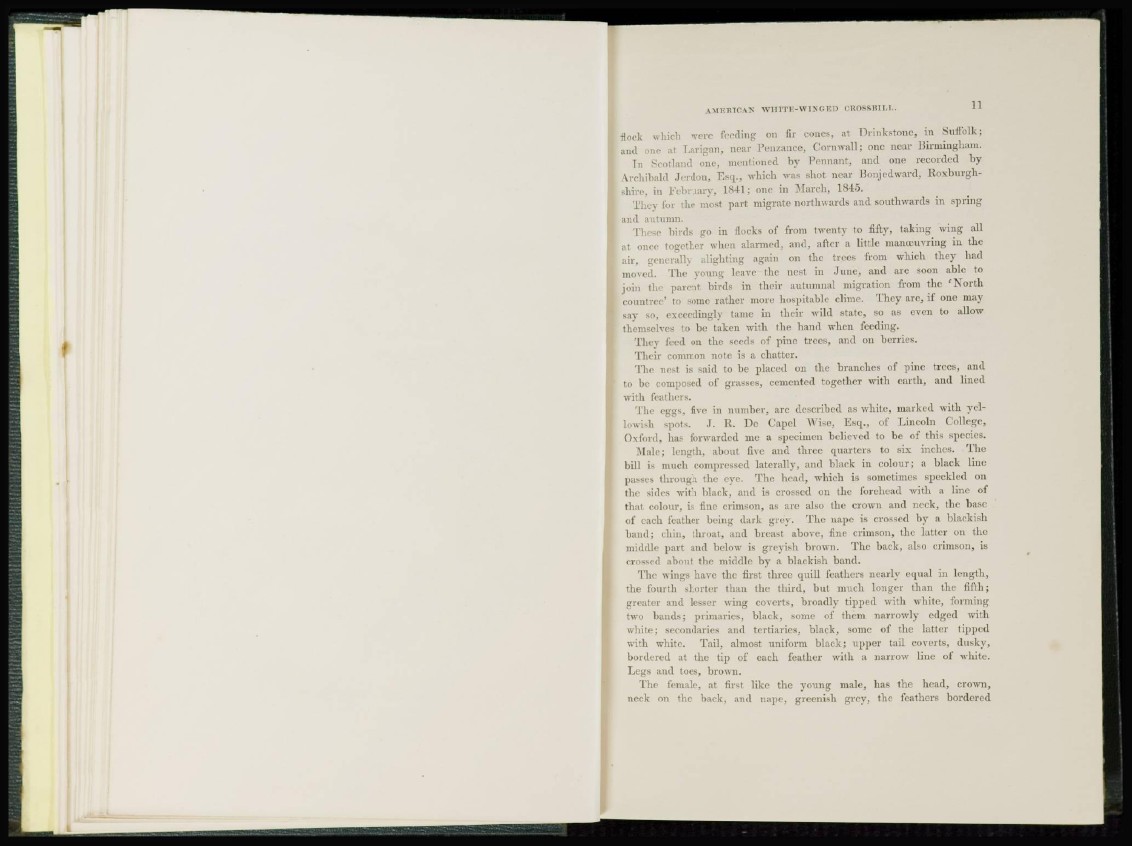
AMERICAN W H I T E - W I K G E D OKOSSBILL. 1 1
flock winch were feeding on fir cones, at Drinkstonc, in Suffolk;
and one at T.arigan, near Penzance, Cornwall; one near Birmingham.
I n Scotland one, mentioned by Pennant, and one recorded by
Archibald J e r d o n , Esq., which was shot near Bonjcdward, Roxburghshire,
in F e b r u a r y , 1841; one in March, 1845.
They for the most part migrate northwards and southwards in spring
and autumn.
These birds go in flocks of from twenty to fifty, taking wing all
at once together when alarmed, and, after a little manoeuvring in the
a i r , generally alighting again on the trees from which they had
moved. The young leave the nest in June, and are soon able to
j o in the parent birds in their autumnal migration from the ' N o r th
countree' to some r a t h e r more hospitable clime. They a r c , if one may
say so, exceedingly tame in their wild state, so as even to allow
themselves to be taken with the hand when feeding.
They feed on the seeds of pine trees, and on berries.
Their common note is a chatter.
The nest is said to be placed on the branches of pine trees, and
to be composed of grasses, cemented together with earth, and lined
with feathers.
The eggs, five in nnmber, are described as w h i t e , marked with yellowish
spots. J. R. Dc Capel Wise, Esq., of Lincoln College,
Oxford, lias forwarded me a specimen believed to be of this species.
Male; length, about five and three quarters to six inches. The
bill is much compressed laterally, and black in colour; a black line
passes through the eye. The head, which is sometimes speckled on
t h e sides with black, and is crossed on the forehead with a line of
that colour, is fine crimson, as are also the crown and neck, the base
of each feather being dark grey. The nape is crossed by a blackish
b a n d ; chin, throat, and breast above, fine crimson, the l a t t e r on the
middle part and below is greyish brown. The back, also crimson, is
crossed about the middle by a blackish band.
The wings have the first three quill feathers nearly equal in length,
t h e fourth shorter than the third, but much longer than the fifth;
g r e a t e r and lesser wing coverts, b r o a d l y tipped with white, forming
two bands; primaries, black, some of them narrowly edged with
w h i t e ; secondaries and tertiaries, black, some of the latter tipped
with white. Tail, almost uniform black; upper tail coverts, dusky,
bordered at the tip of each feather with a narrow line of white.
Legs and toes, brown.
The female, at first like the young male, has the head, crown,
neck on the back, and nape, greenish grey, the feathers bordered